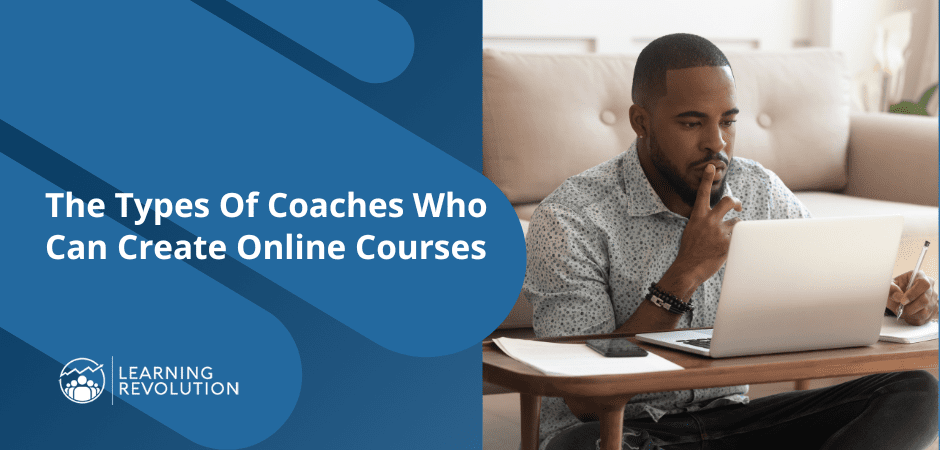

Did you know that 95% of buying decisions are based on emotion and impulse rather than logic?
This is why understanding human psychology is crucial when creating a sales page for your online course, coaching program, membership site, or any other digital product.
You can share all the logical reasons for buying your product, but if you don’t trigger the right emotions in your readers, you won’t drive many sales.
So, how can you create a sales page that hooks your prospects, gets them excited, makes them pull out their wallets, and beg you to reserve their spot in your offering?
Answer: By using proven copywriting techniques that influence your reader’s thinking and make your offer more desirable.
In this article, I’ll discuss some of these psychological hacks and show you how different creators are using them to drive online course sales as well as the sales of similar offerings like coaching programs and membership sites.
Let’s dive in.
1. Show Transformation by Highlighting The Benefits
People don’t buy products, they buy better versions of themselves (subconsciously, of course).
They’re looking to become better speakers, better programmers, better negotiators, better parents, better musicians, better marketers, or whatever your course is promising.
They only care about the benefit and think of your course as a means to achieve it.
The job of your sales page copy is to show your visitors the transformation they’re seeking. This is where using contrasts in copy, design, and images is so vital for increasing online course sales.
Let me share a couple of examples from the sales page of the Amazing Selling Machine, a hugely popular Amazon marketing course.
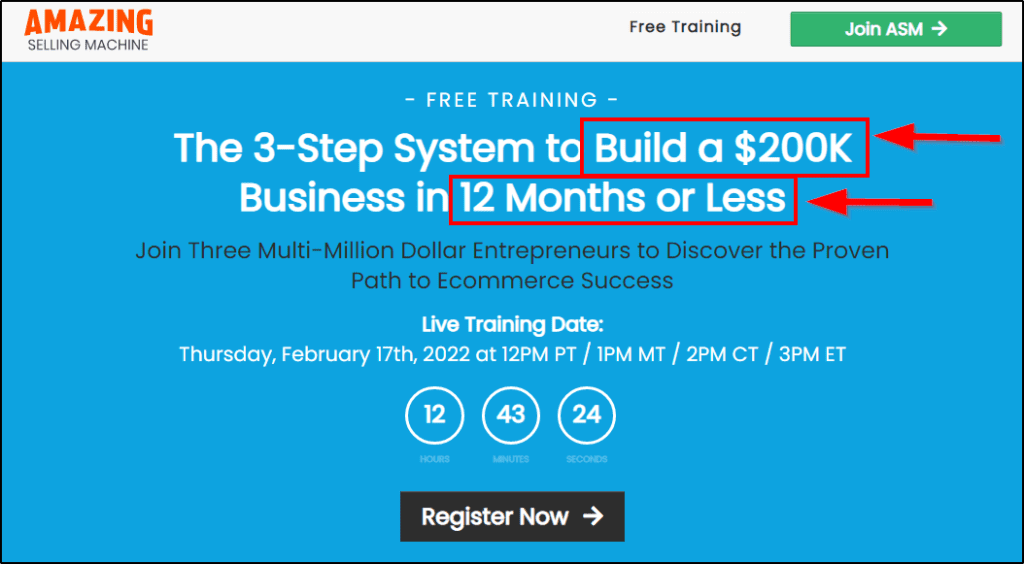

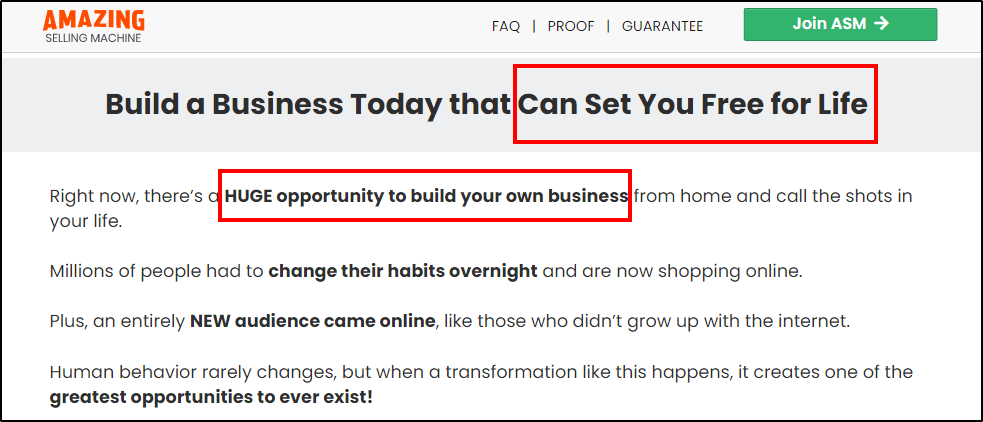

Notice how in both screenshots, the main headline focuses on the core benefit and transformation the course is offering. It doesn’t mention the number of modules or lessons or the course instructor.
Instead, the focus is on highlighting the transformation using phrases like “set you free for life” and “build a $200K business” that show the readers what they dream of.
Here’s an even better example from the Authority Hackers course. It not only highlights the benefit but also answers the reader’s objections by mentioning “even if you’re a complete beginner”.
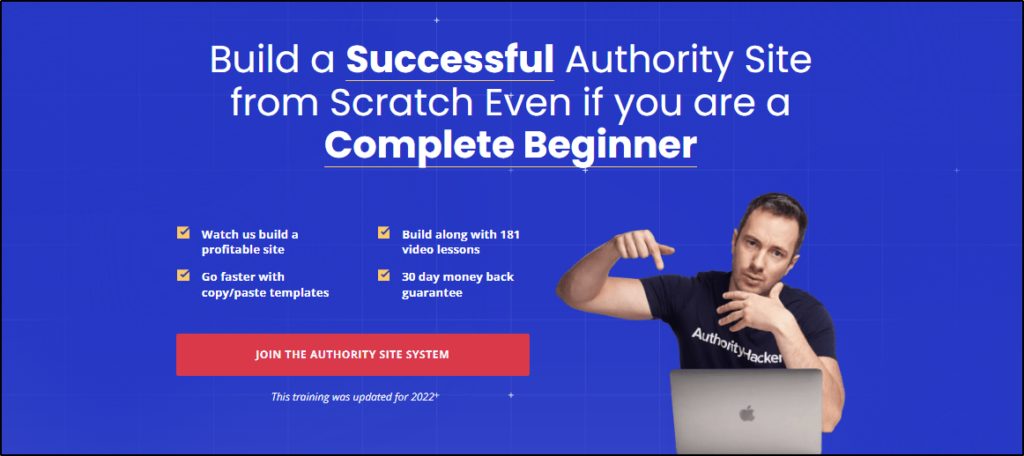

So, if you want your sales and landing pages to immediately grab attention, start with the most significant benefit and value proposition of your course and show them the transformation they seek.
2. Use Echoing to Personalize Your Message
Effective sales messaging doesn’t work by coincidence.
Instead, each word is there for a purpose.
Echoing is a great example of how persuasive copywriting makes people take action. If you’ve never heard of it before, echoing means using your ideal customer’s language (the precise words and phrases) to communicate your message.
It helps you build a connection and brings you and your prospects on the same wavelength. It shows them you understand their problem, speak their language, and have the solution they’re looking for.
So how do you know what your customers are saying and speak their language in your sales copy? By listening to them on social media, conducting interviews, analyzing online reviews, and diving deep into online forum discussions.
For example, Backlinko demonstrated how to use the customer voice in your copy by researching different Reddit threads and identifying the most common problems users have shared in various discussions.
![Screenshot of Reddit thread, "[Question] Is there a Paleo protein bar tht doesn't hurt or get stuck in my teeth?"](https://www.learningrevolution.net/wp-content/uploads/copywriting1-min.png)
![Screenshot of Reddit thread, "[Question] Is there a Paleo protein bar tht doesn't hurt or get stuck in my teeth?"](https://www.learningrevolution.net/wp-content/uploads/copywriting1-min.png)
As you can see, most users have said that Paleo bars are hard to chew.
So, Backlinko created a sales page using the exact words and problems to sell its Paleo bar.
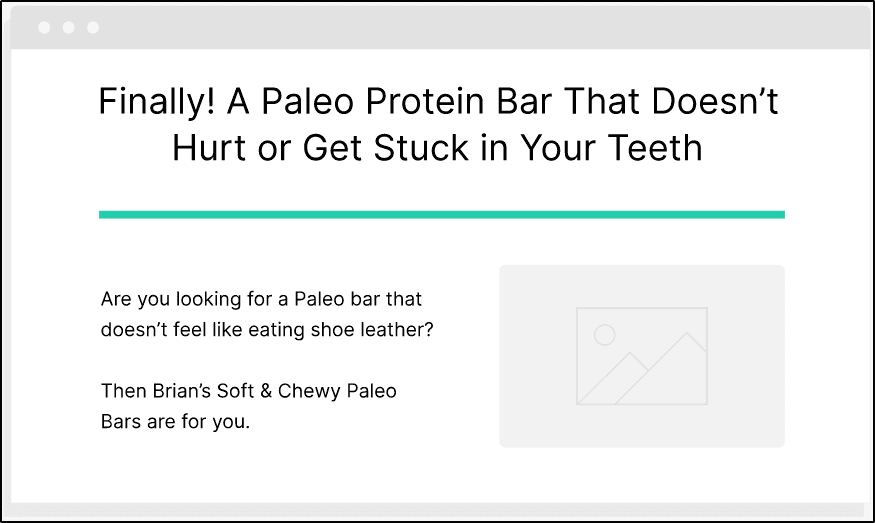

So, when creating a sales page for your online course, get your detective hat on and find the words your target audience uses to describe its problems.
You can find valuable insights by researching competing courses, comments on articles related to your course topic, Amazon reviews for related products, forum discussions, and social media monitoring.
3. Sell More Using Your Prospects’ Greed
“Would you like fries with that?”
“Should I make this an upsize meal?”
If you’ve been to McDonald’s, you must’ve heard this every time you bought a meal. Believe it or not, those simple cross-sells and upsells make up to 40% of Mcdonald’s annual profits.
Why? Because the consumers somehow feel they’re getting a great deal and go for the upsell more often than not.
That’s greed in action (not in a bad way, we all love great deals).
Here’s how you can apply the same formula to your online course sales.
Create two course offers:
– One with only the main course content.
– The other, priced a little higher, with lots of bonuses.
Add special bonus lessons, resources, templates, guest interviews, etc., to your course offer. It wouldn’t cost you much because you can use your old webinar recordings, blog posts, YouTube videos, and other free content to make your offer more attractive.
But it does a great job attracting customers because they feel they’re getting a great deal with all those extras.
Here’s an example of an online course sales page using bonuses to entice customers.
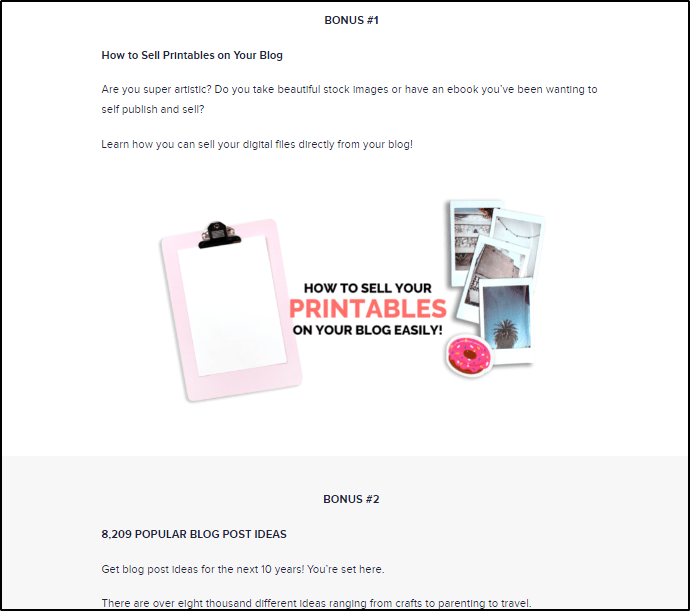

Here’s another excellent example.
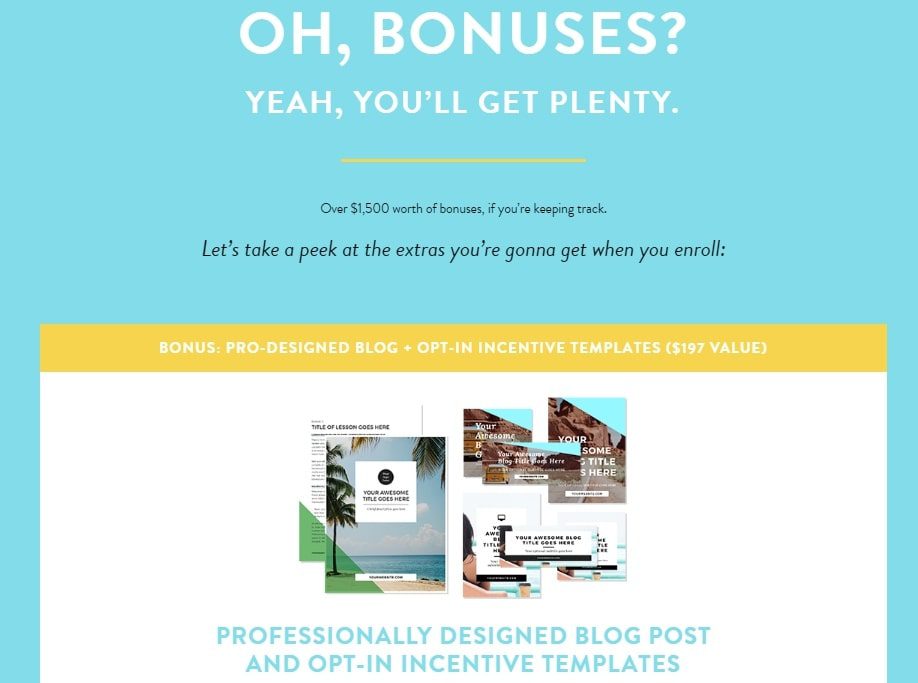

As you can imagine, bonuses increase your course’s perceived value and do an excellent job of persuading them to buy from you.
4. Use Price Anchoring to Easily Convince People
Pricing is a fascinating topic, and it shows the strange ways our brains work.
For example, have you ever been to a jewelry shop to buy a ring? Most jewelers ask you the type of ring you want and then first show you something that’s way out of your budget.
Once you tell them it’s out of your reach, they’d pull out a gorgeous ring that’s exactly in the price range you want.
As a result, you think it’s a steal, don’t negotiate, and take the offer with a smiling face.
That’s price anchoring.
By showing you an expensive item first, the seller programmed your mind to accept anything that’s within your budget. So, you subconsciously compared the prices and happily bought the second ring.
Online course sellers and subscription services use this price anchoring technique regularly.
Here’s how.
Internally, they choose a preferred plan.
Then they add a higher-priced plan to the pricing page to make their preferred plan look more attractive.
Hosting companies and SaaS businesses use this technique with great success.
For example, here’s how Freshbooks uses anchoring.
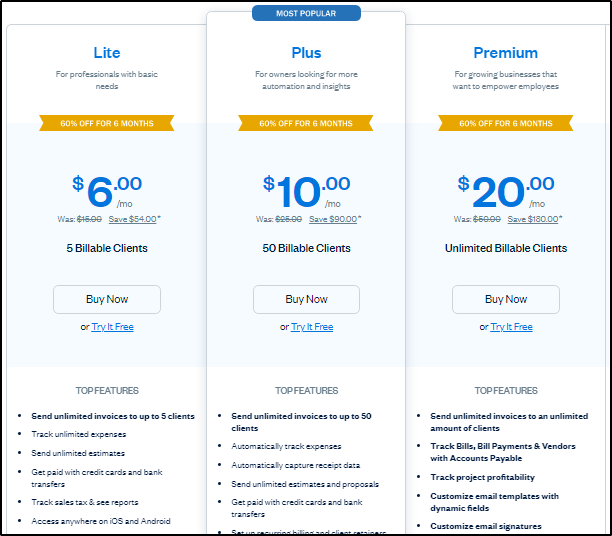

To use price anchoring effectively, make sure the higher-priced plan is clearly more expensive and doesn’t offer any significant benefits over your preferred plan.
This would naturally make your preferred plan more attractive and help you drive higher conversions.
5. Create Scarcity and Urgency To Accelerate Sales
Scarcity and urgency are two different psychological triggers. But they mostly work together in pushing your visitors to take action.
Scarcity is when you open your program to a limited number of students, for example, 30 or 50 seats only.
This forces your audience to make a decision.
But to accelerate the decision-making process, add a deadline to your offer as well. The moment you make your offer time-sensitive, you’ll make your visitors think hard about it.
Here’s what I’m talking about.
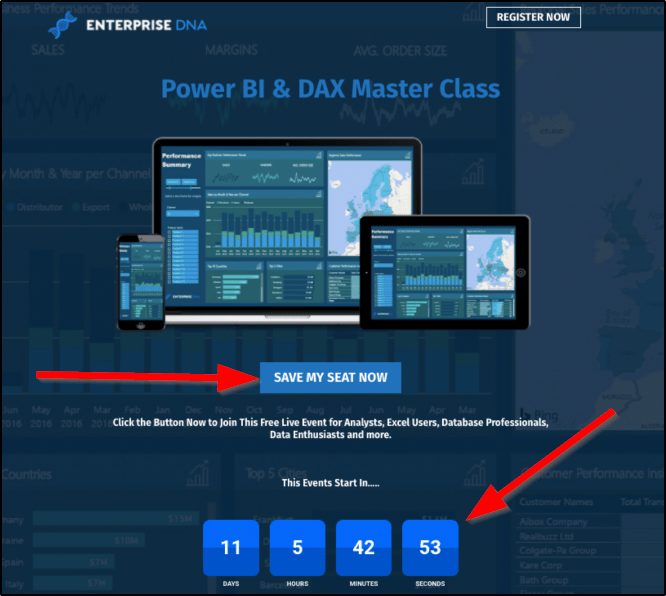

This is why online programs that open once or twice a year perform significantly better than the courses available all year.
However, if you say an offer is time-sensitive, make sure you stick to your word and don’t open it for anyone before the next session. Otherwise, your offer would lose credibility, and your deadlines won’t have the same effect.
6. Leverage Social Proof to Boost Credibility
Social proof is one of the biggest conversion drivers on a landing page.
It shows your visitors that people already trust you, have invested in your course, and got the results you promised.
It removes conversion barriers, relaxes your prospects, and increases your chances of closing the sale.
According to a Nielsen study, 92% of consumers are more likely to trust non-paid recommendations than paid advertising.
Studies have also found that 82% of consumers trust online reviews as much as personal recommendations from friends and family members.
So, how can you leverage social proof to increase your online sales?
Here are a few examples.
– Testimonials from past students are the most popular form of social proof for online courses. The best testimonials share the before/after effects and tangible results to gauge the impact of the course.
This testimonial from Michelle’s course, Making Sense of Affiliate Marketing, is an excellent example.
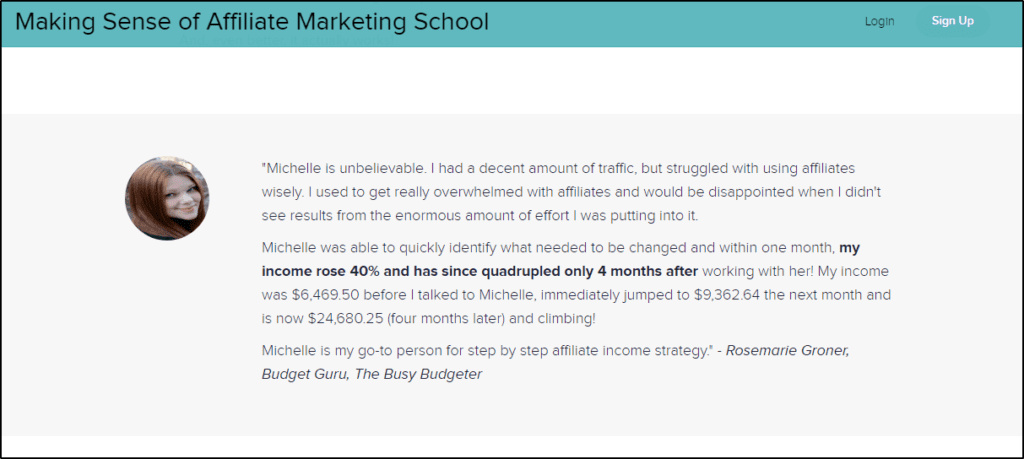

– Adding logos of popular publications and brands that have featured your course is another easy way to show off your credibility.
Here’s an example from Ryan Robinson’s course page.
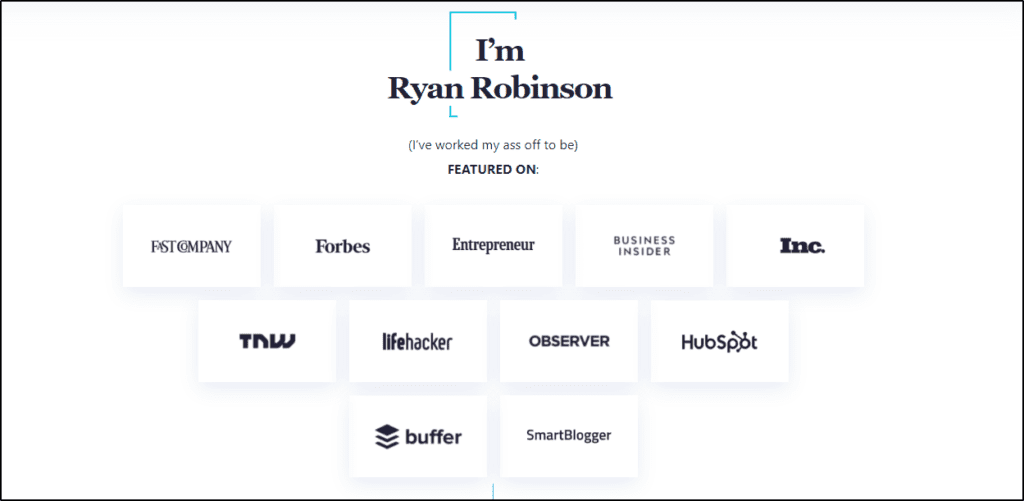

– The size of your email list and the number of people who have taken your course in the past is another effective social proof you can use on your sales page.
Udemy uses this technique on its course pages.
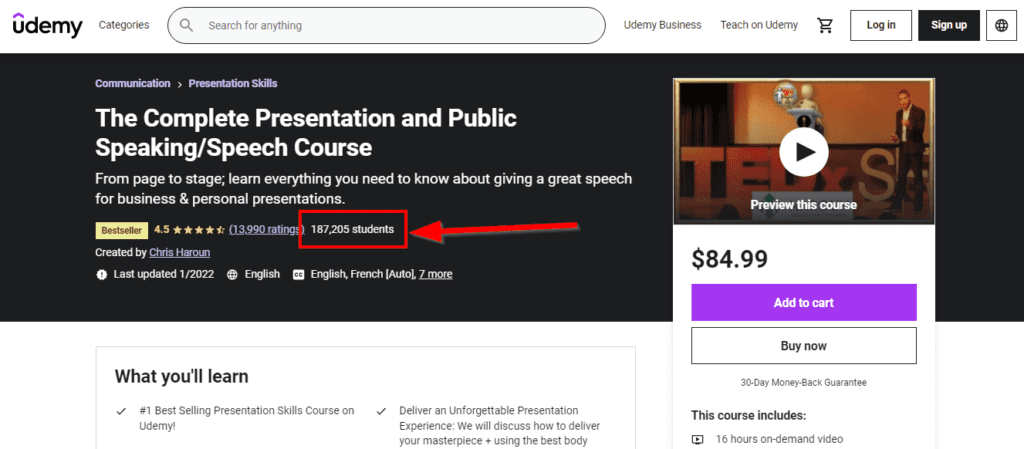

– Detailed case studies of previous successful students is another super effective form of social proof that helps you persuade more leads into buying your course. The case studies can be in the form of PDFs or videos.
For example, Justin Goff, a famous direct response copywriter, publishes extended video interviews on YouTube with his successful students and also embeds them on his course page.
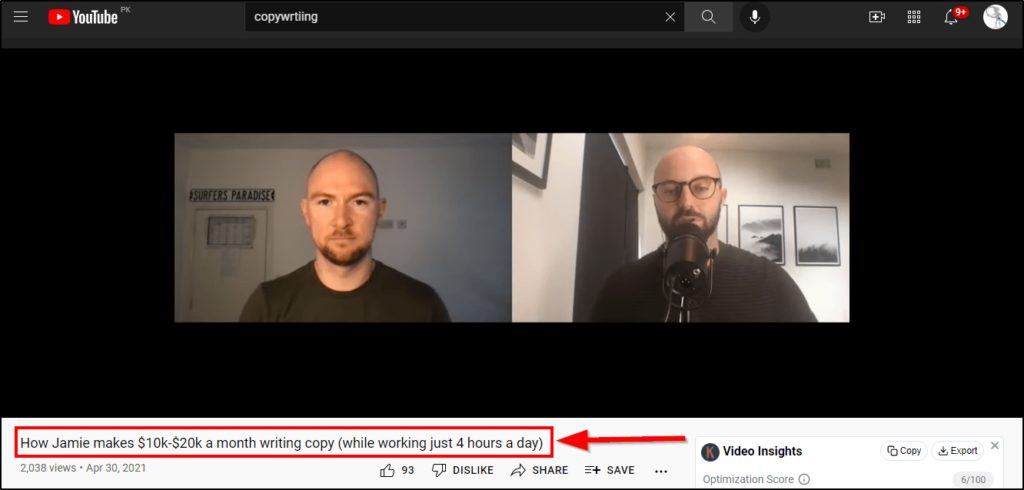

7. Make Prospects Regret Inaction to Trigger More Conversions
Regret and helplessness are among the worst feelings a person can experience.
But savvy marketers and copywriters use it to wake up lazy prospects and force them to take action.
The marketing team at CopyHackers are experts in this, and they’ve used it brilliantly on the sales page of their flagship course, 10x Freelancer.
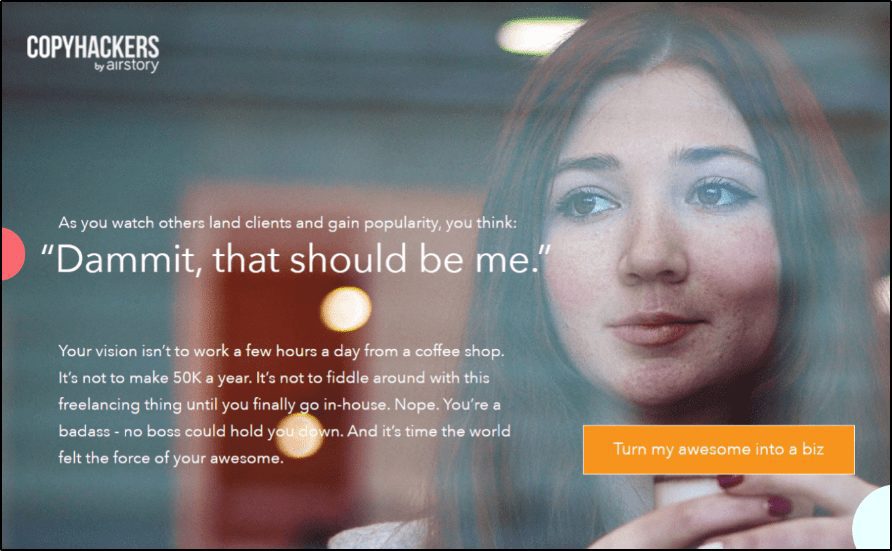

But be careful using this angle in your copy because it can also backfire and turn people away.
Only use it when you’ve thoroughly researched your audience and know they’ll react positively to your message.
How would you know? Test different versions of your landing page and see which one drives more conversions.
8. Trigger Fear by Showing Undesirable Outcomes
Fear is among the most powerful human emotions and can make us do things we believe we aren’t capable of.
Marketers use fear to scare prospects from undesirable results.
For example, look at this award-winning ad of an awareness campaign encouraging bookers to wear helmets.
Feel its impact.


How can you leverage fear to sell more online courses?
Show your audience the potential consequences of not taking your course.
For example, if your course teaches a money-making skill, you can trigger the fear of missing out (FOMO) by showing how much less talented people are making money using the right skills.
Similarly, you can highlight how not skilling up can impact your future income, employability, social status, and ultimately your life goals.
9. Make Them Dream by Showing The Perfect Life
I just showed you a landing page by CopyHackers that perfectly used regret to sell more.
CopyHackers used another landing page for the same course, 10x Freelancer. But this one takes an entirely different approach.
It makes the prospects dream and shows them the perfect life they can achieve by signing up for 10x Freelancer.
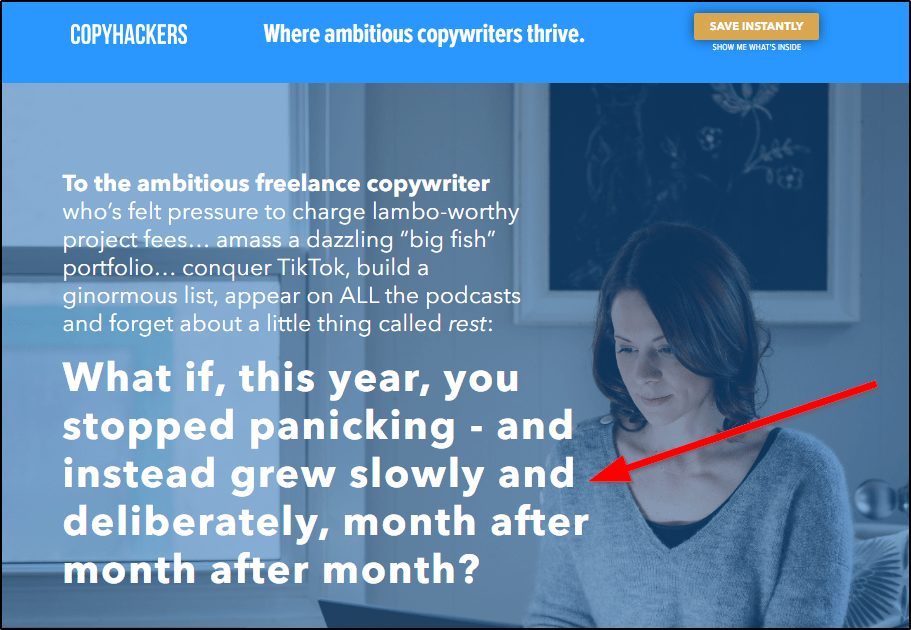

Look how it smartly uses transformation and positive framing to create an impactful and persuasive message.
This approach works because it pats the reader on the back and tells them they can do it – they should do it.
10. Use Reciprocity to Close More Sales
Reciprocity is the first of Robert Cialdini’s world-renowned 6 principles of persuasion.
Here’s what it says.
“People are obliged to give back to others in the form of a behavior, gift, or service that they have first received.”
Reciprocity represents the human tendency to return favors positively. In marketing, it means that customers are much more likely to respond positively to your offer if you give them free value upfront.
This applies perfectly to online courses and consultancy businesses.
If you want people to buy, don’t directly pitch them your main product.
Instead, offer a free webinar, eBook, workshop, or coaching session to get them on your email list. Then keep nurturing the relationship by providing value consistently.
For example, Anton Kraly promotes a free webinar with Facebook Ads to generate subscribers and leads he can later convert into customers for his premium Amazon FBA and dropshipping courses.
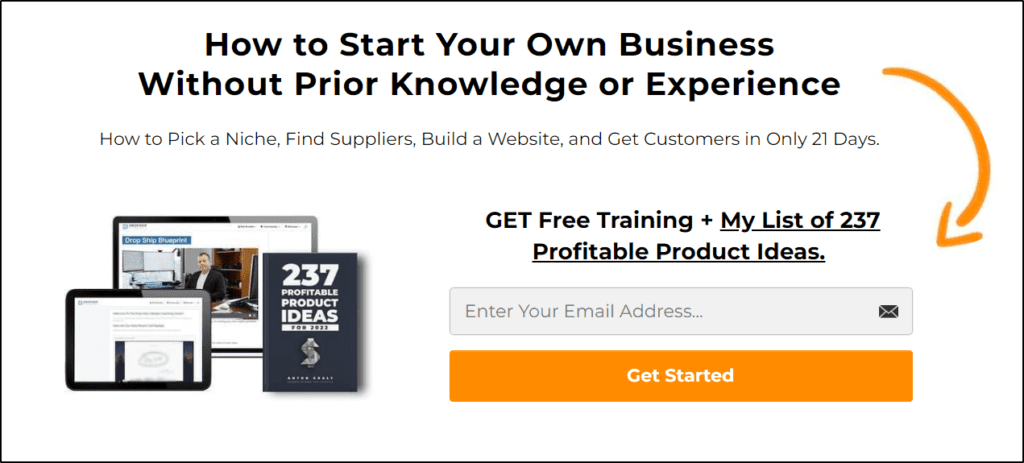

The quality of your free resources determines how strongly a prospect feels about your brand. After giving tons of free value, they’re much more likely to respond positively to it when you pitch them your main product.
Really, this is the fundamental principle of the Value Ramp: demonstrate value with free offerings to create momentum and increase online course sales (as well as sales of everything else you offer).
11. Borrow Credibility Using the Halo Effect
I’ve already said this a few times, but it fascinates me how the human mind works and how we all follow similar thinking patterns.
The Halo Effect is a prime example of this tendency.
If you’ve never heard of it before, the Halo Effect is a type of cognitive bias in which we form an overall impression of a person based on one of their characteristics. This directly impacts how we engage with the person and think about their other personality traits.
For example, research shows that people automatically think a good-looking person is smarter, funnier, and more likable than a less attractive individual.
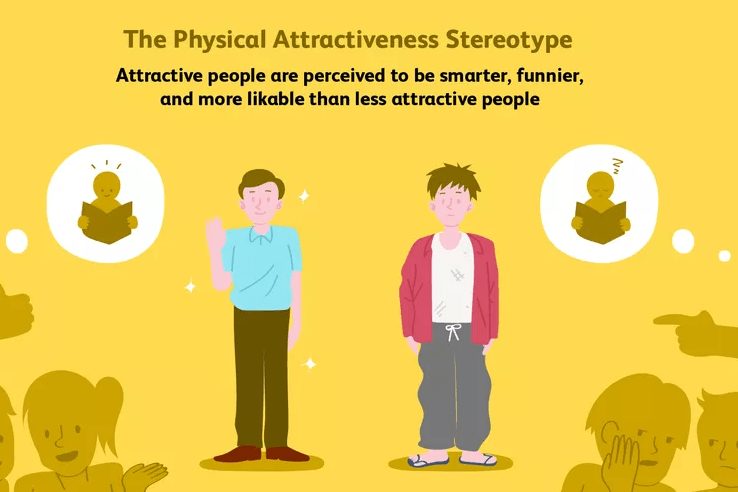

This explains why brands spend millions of dollars using attractive celebrities in their marketing campaigns.
But the Halo Effect works both ways, which means negative stereotypes about different communities and groups can also impact people’s judgment about them.
How does the Halo Effect apply to online course marketing and sales pages?
Your course’s presentation, branding, and launch quality impact its perceived value. This is why it’s crucial to invest in professional landing page design and high-quality images and video content when launching a course.
Similarly, any endorsements and testimonials from well-known marketers and influencers also trigger the Halo Effect and help you persuade buyers more effectively.
12. Use Reverse Psychology to Generate More Leads
Applying reverse psychology to your landing page, CTAs can drastically improve your sign-up rate, help you drive more leads for your online courses, and ultimately increase online course sales.
For example, look at this CTA on ClickUp’s landing page.
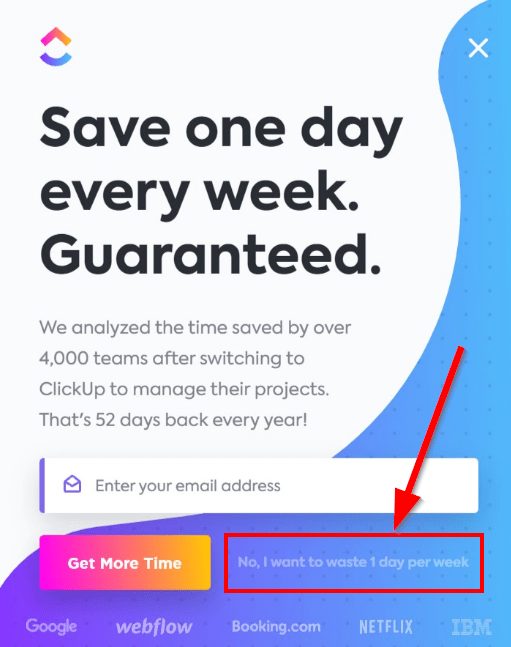

Notice how they’ve used reverse psychology by adding a negative CTA with the main CTA button. Of course, every business owner wants to save time. But more importantly, is there any business owner who’d want to waste 1 day per week?
Using such CTAs makes the visitors think twice before declining the offer.
The secret to nailing reverse psychology CTA on your landing page is by using the core benefit as the main CTA and adding a descriptive negative CTA that describes what the visitor would miss by not taking your offer.
For example, for an SEO course, these CTAs could be:
Primary CTA: Yes, I want to drive thousands of visitors
Negative CTA: No, I don’t want more traffic
Like all other copywriting techniques, test this one against other CTAs to see if it’s working.
13. Disrupt Then Reframe (DTR) To Persuade Faster
Disrupt Then Reframe (DTR) is a copywriting technique in which you reframe an offer to make it look more straightforward and accessible.
In a popular experiment, researchers tasked two teams of undergrads with door-to-door selling Christmas cards to benefit a charity.
One team simply stated the price of the cards to their prospects, which was $3.
The other team used the DTR technique by stating the price as 300 pennies instead of $3 and reframed by adding a small pitch “it’s a bargain”.
As a result, the second team closed 70% sales compared to the first team, which sold to only 30%.
Here’s an example of this technique on a membership site’s sign-up page.
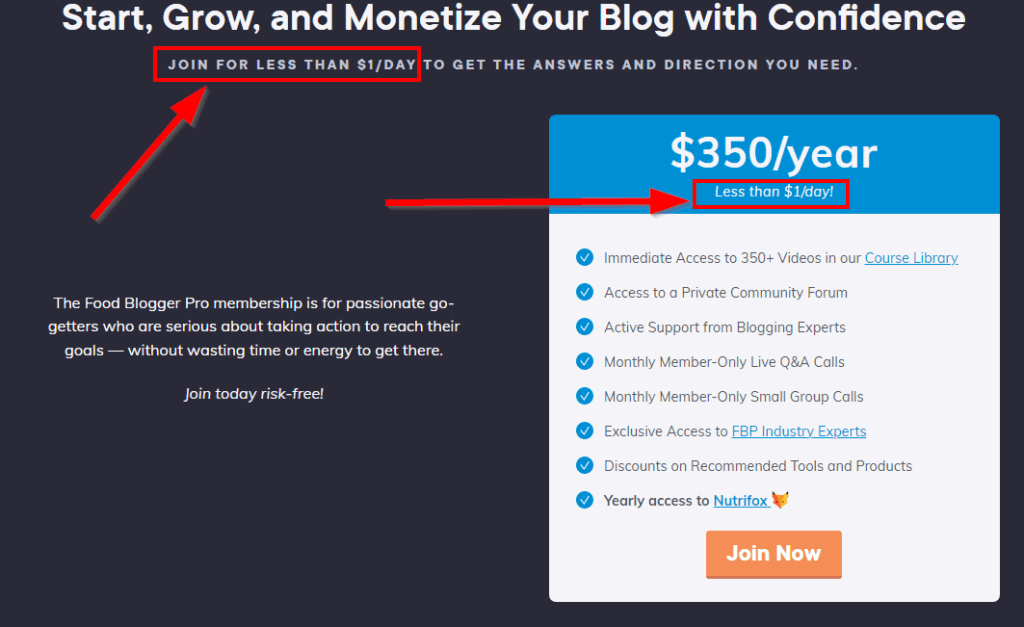

The membership site’s annual fee is $350. But by stating it as less than $1 per year, they represent the same information in a much easier and more acceptable way.
The main purpose of this technique is to help the visitors realize your offer’s worth and remove any purchase barriers in their minds.
14. Associate Your Course with A Noble Cause Or Movement
If you care about a particular cause or movement that also resonates with your target audience, you can use it to drive more conversions on your sales page.
By connecting your course to a higher purpose, you give your audience a chance to purchase your course and make an impact on something they care about.
For example, your sales page could mention that a certain percentage of your sales goes to girls’ education, feeding people in Africa, advocating immigrant rights, promoting vegan food, or any other cause that your audience cares about.
But ensure the funds actually go to the cause you mention, and your audience has some way to track it as well.
15. Use Exclusivity to Fill Your Waiting List
Want to make your high-ticket coaching program or online course 10x more desirable? Make it harder for people to get in.
Let me explain.
Typical online courses open a limited-time sign-up window after which no one can get it in.
But you can make your course even more exclusive by defining the criteria an applicant has to meet to qualify for it.
Justin Goff uses this strategy to maintain an exclusive email list of the best copywriters and marketers who want to learn from him.
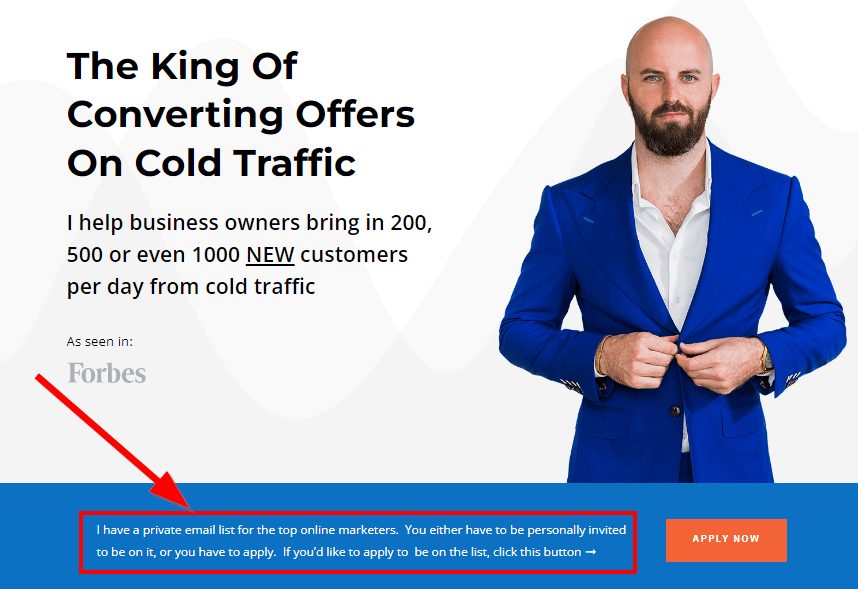

This adds a layer of exclusivity to your course, increases its perceived value, and allows you to sell it for a high price tag.
However, to make this work, your offer should be genuinely valuable and justify its price tag. Otherwise, this approach could backfire as well.
Are You Ready to Increase Your Online Course Sales?
Copywriting and other sales techniques cannot turn a bad product into a good one. But if your online course offers real value, the right psychological triggers can help you sell ten times more than usual.
Have you tried any of these techniques for selling online courses? Or do you know any other strategies that I should’ve included in this post? Either way, I’d love to hear from you.
Table of Contents


